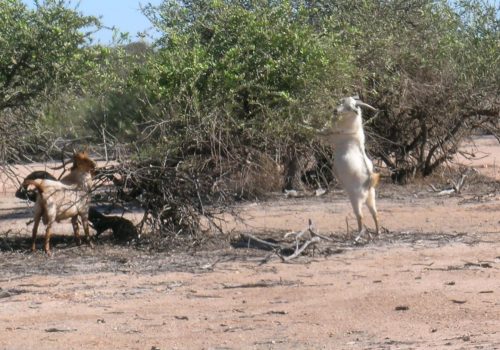Feral Animal Control
There was a full suite of introduced animals on Peron Peninsula when the government of Western Australia purchased the Peron pastoral station in 1990 – goats, sheep, cattle, rabbits, foxes and feral cats.
Feral animal control began with the removal of more than 15,000 sheep and cattle and about 12,500 goats in the early 1990s.
Project Eden launched in 1995 with the construction of a fence across the narrow neck of Peron Peninsula about 75km south of Cape Peron, along with a poison baiting program to reduce fox and feral cat numbers. The fence was built to prevent movement of feral animals north of the isthmus.
When the fence was constructed and the control program began there were an estimated 2500 foxes on the peninsula. Virtual elimination of foxes was achieved in the first year when the dried meat baits containing 1080 poison were dispersed across the peninsula.
Baiting of the peninsula continues and the rare fox that makes it north of the fence is quickly removed. Feral cats are also susceptible to 1080 poison when live prey is scarce.
The 1080 baits have since been refined to be more palatable to feral cats and have been taken by up to 80% of feral cats during drought periods.
In the late 1990’s intensive leg-hold trapping was carried out for feral cat research and population control. Lures using different sounds and smells were used for a number of years and much was learnt about the breeding, behaviour and diet of feral cats while helping control their numbers. Cage trapping was also trialled but was not successful, in part due to some of the reintroduced native animals entering the traps. Aerial 1080 baiting is now the only feral cat control method.
Rabbits persist on the peninsula with population fluctuations through the year. Myxomatosis and more recently calicivirus have helped control their numbers. It is hoped that a new strain of calicivirus released in 2017 will significantly reduce rabbit numbers again.

